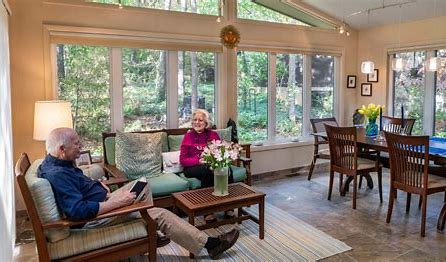As architects, we shape the spaces where people live, work, and play. But one of the most transformative opportunities in our profession today is designing homes and environments that support “aging in place.” This concept empowers individuals to live independently and comfortably in their own homes as they age, rather than relocating to assisted living facilities. Aging in place design is not just a trend—it’s a vital, growing movement that responds to demographic changes and enhances quality of life. Here’s why aging in place design should be a cornerstone of your architectural practice.
The Demographic Shift
The global population is aging at an unprecedented rate. In many countries, the proportion of individuals aged 65 and older is rapidly increasing. According to the World Health Organization, by 2050, the number of people aged 60 years and older will double, reaching 2.1 billion. This demographic shift creates a pressing need for housing solutions that cater to the unique requirements of older adults.
Key Principles of Aging in Place Design
- Accessibility: Homes should be designed with features that accommodate mobility limitations. This includes wider doorways, zero-step entrances, and open floor plans that allow for easy navigation with wheelchairs or walkers.
- Safety: Reducing the risk of falls and other accidents is paramount. Incorporating non-slip flooring, grab bars in bathrooms, and adequate lighting can make a significant difference in preventing injuries.
- Adaptability: Future-proofing homes with adaptable design elements ensures they can meet changing needs over time. Adjustable countertops, removable cabinets, and shower seats are examples of features that can be modified as required.
- Technology Integration: Smart home technology can greatly enhance the quality of life for older adults. Automated lighting, voice-activated systems, and health monitoring devices contribute to a safer and more comfortable living environment.
- Comfort and Aesthetics: Aging in place doesn’t mean compromising on style. Thoughtful design can integrate functionality with beauty, creating spaces that are both practical and pleasing.
Benefits of Aging in Place Design
- Enhanced Quality of Life: Aging in place allows individuals to remain in familiar surroundings, which can positively impact mental health and emotional well-being. The comfort of home, community connections, and a sense of independence are invaluable benefits.
- Cost Efficiency: Long-term financial savings are significant. The costs associated with modifying a home for aging in place are generally lower than those of long-term care facilities.
- Market Demand: There is a growing demand for homes that support aging in place. By specializing in this area, architects can tap into a lucrative market and differentiate themselves from competitors.
- Sustainability: Aging in place design aligns with sustainable practices by reducing the need for new construction of assisted living facilities. It promotes the efficient use of existing housing stock.
Implementing Aging in Place Design
To effectively implement aging in place principles, architects should:
- Engage with Clients: Understand the specific needs and preferences of clients who wish to age in place. Personalization is key to creating a home that truly supports their lifestyle.
- Stay Informed: Keep up-to-date with the latest advancements in materials, technologies, and design strategies that facilitate aging in place.
- Collaborate with Specialists: Work with occupational therapists, gerontologists, and other professionals who can provide valuable insights into the needs of older adults.
- Advocate for Change: Promote the importance of aging in place design within the industry and to potential clients. Educating others about the benefits can drive broader acceptance and implementation.
Conclusion
Aging in place design represents a forward-thinking approach to architecture that meets the evolving needs of our society. By incorporating accessibility, safety, adaptability, technology, and aesthetics, architects can create homes that not only support aging individuals but also enhance their overall quality of life. Embracing this design philosophy not only fulfills a growing market demand but also positions architects as leaders in creating sustainable, inclusive, and innovative living environments. As the population ages, the demand for thoughtful, well-designed homes will continue to grow, making aging in place a critical aspect of modern architecture.
By championing aging in place design, architects have the opportunity to make a profound impact on the lives of countless individuals, ensuring they can live with dignity, comfort, and independence in their own homes.


Recent Comments